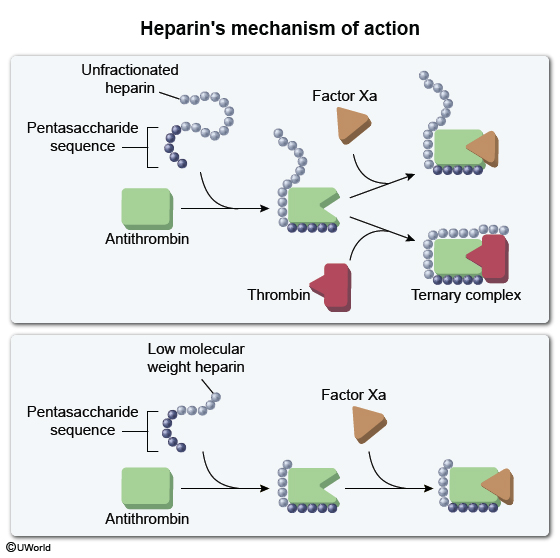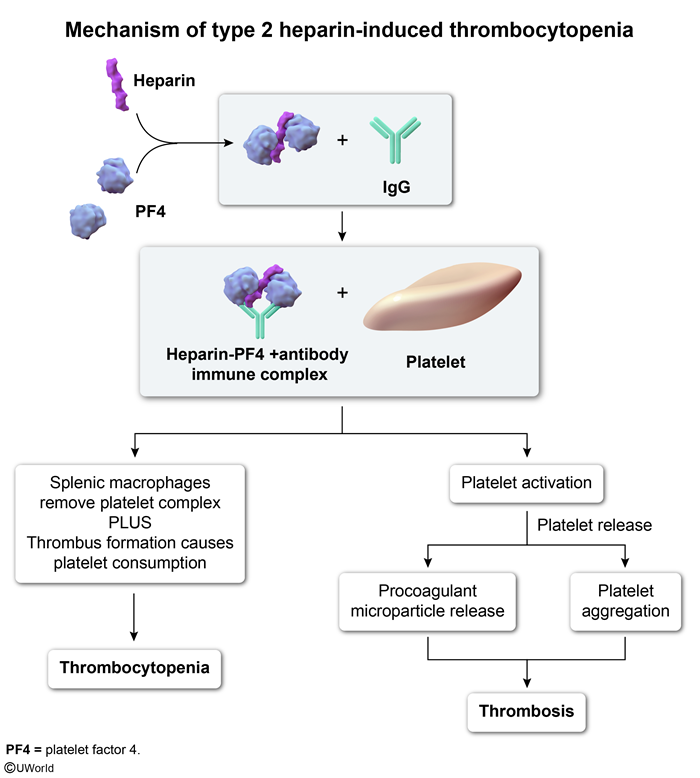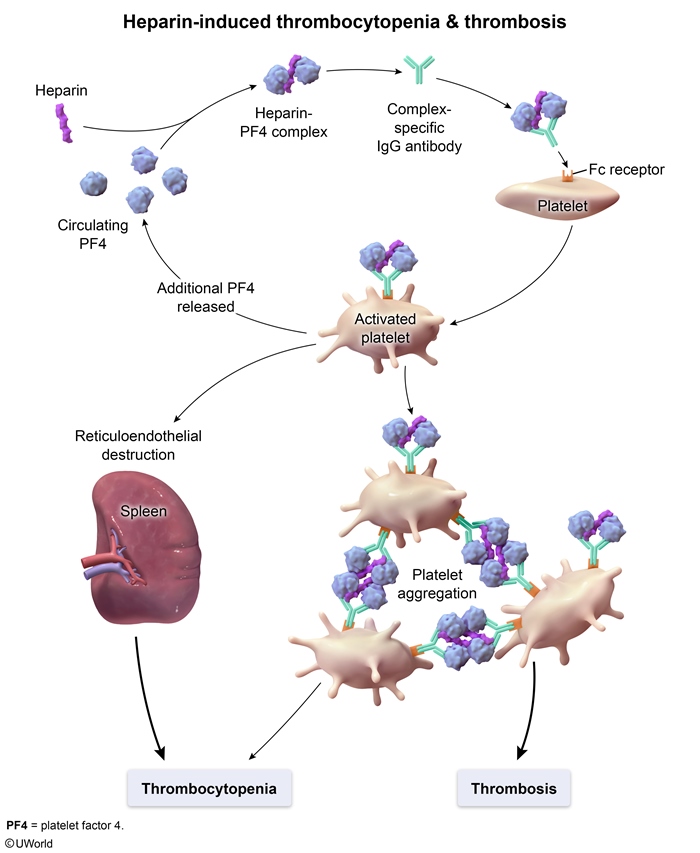Heparin-Induced Thrombocytopenia
Article Sections
Introduction
Heparin-induced thrombocytopenia (HIT) is an adverse reaction to heparin therapy characterized by a drop in platelet count during treatment. There are 2 types of HIT, differing in onset, clinical course, and severity of disease. The clinically significant form, type 2 HIT, is an immune-mediated, life-threatening disease associated with a paradoxical prothrombotic state.
Pathogenesis and risk factors
Heparin is an anticoagulant that is administered intravenously to prevent thrombus formation. Heparin potentiates the action of antithrombin III (Figure 1), which inactivates thrombin and several coagulation factors, including factor Xa. As a result, fibrinogen cannot be converted to fibrin, limiting fibrin clot formation.
In approximately 5% of patients, heparin causes an adverse reaction characterized by thrombocytopenia. There are 2 forms of HIT (Table 1
Continue Learning with UWorld
Get the full Heparin-Induced Thrombocytopenia article plus rich visuals, real-world cases, and in-depth insights from medical experts, all available through the UWorld Medical Library.
Figures


